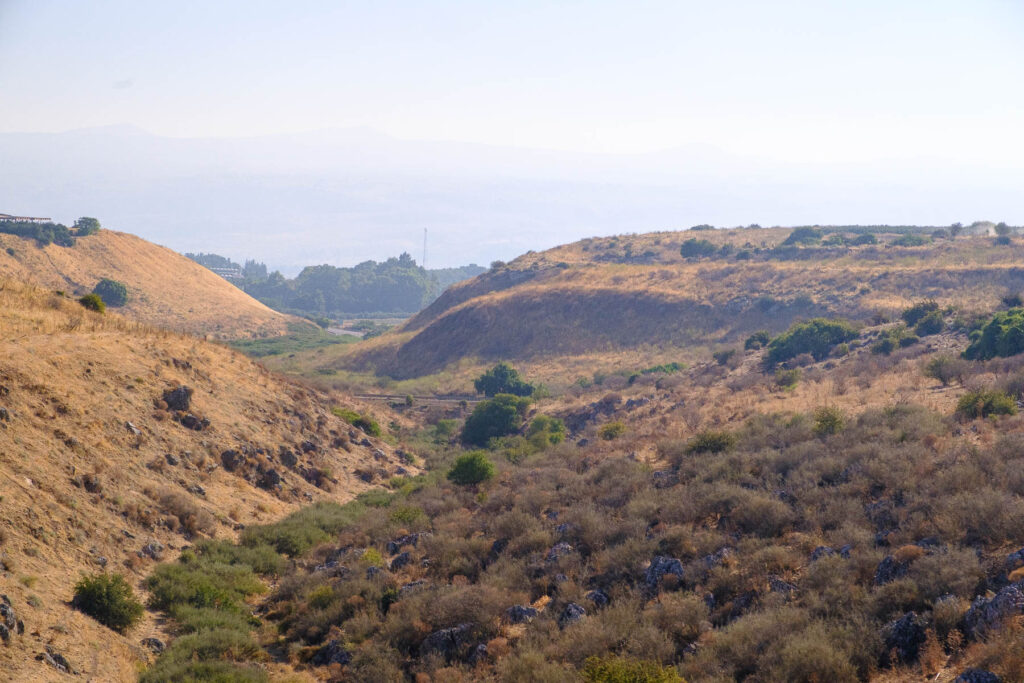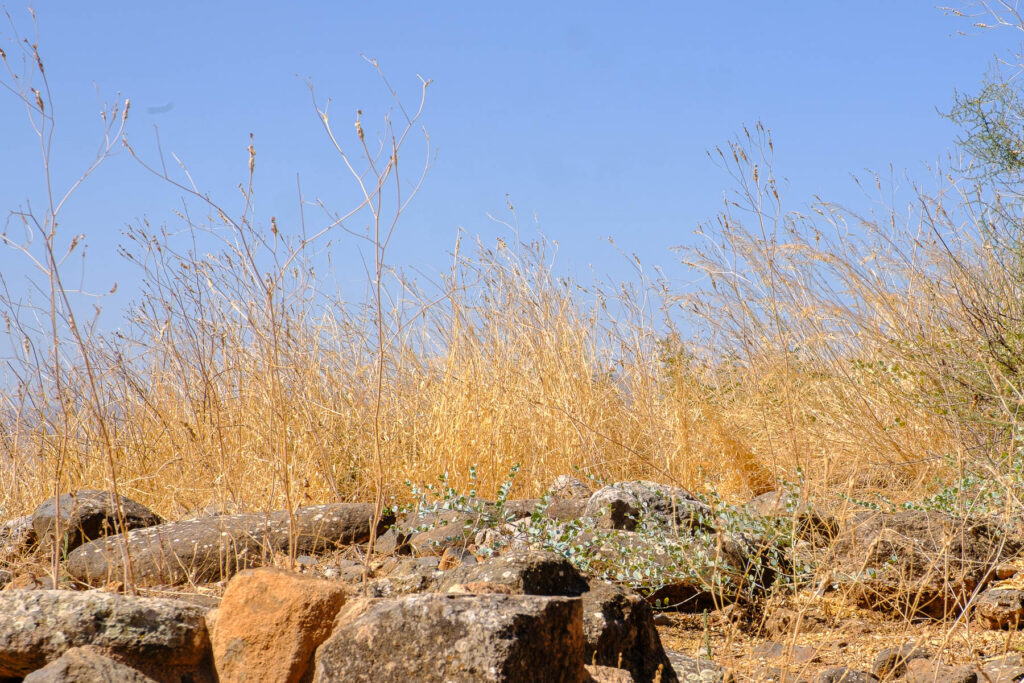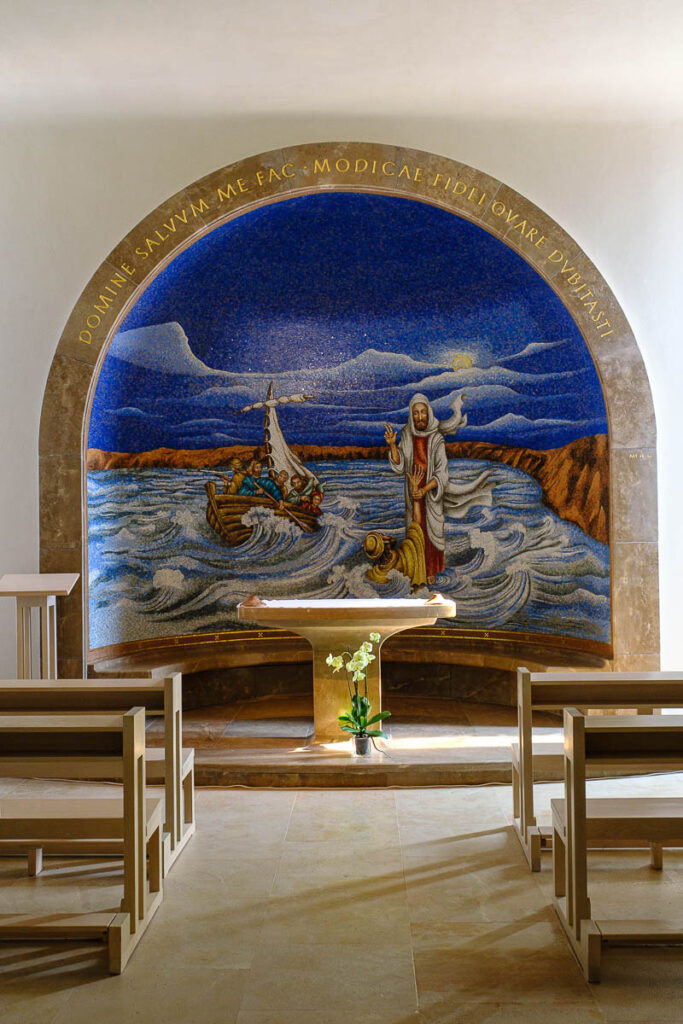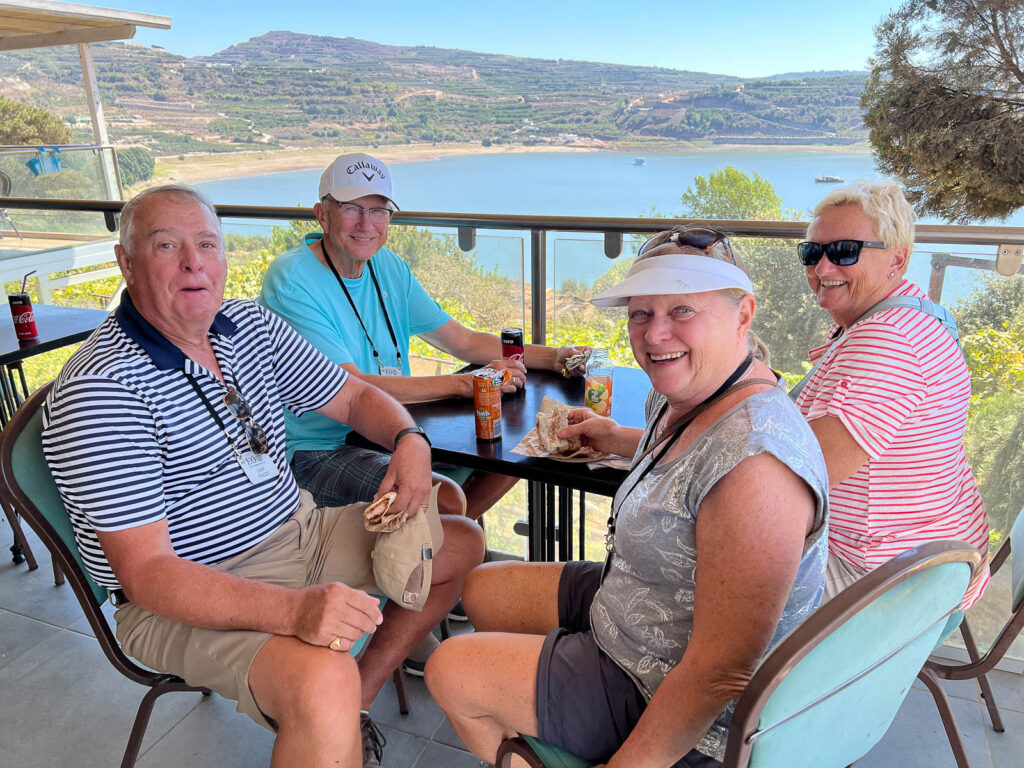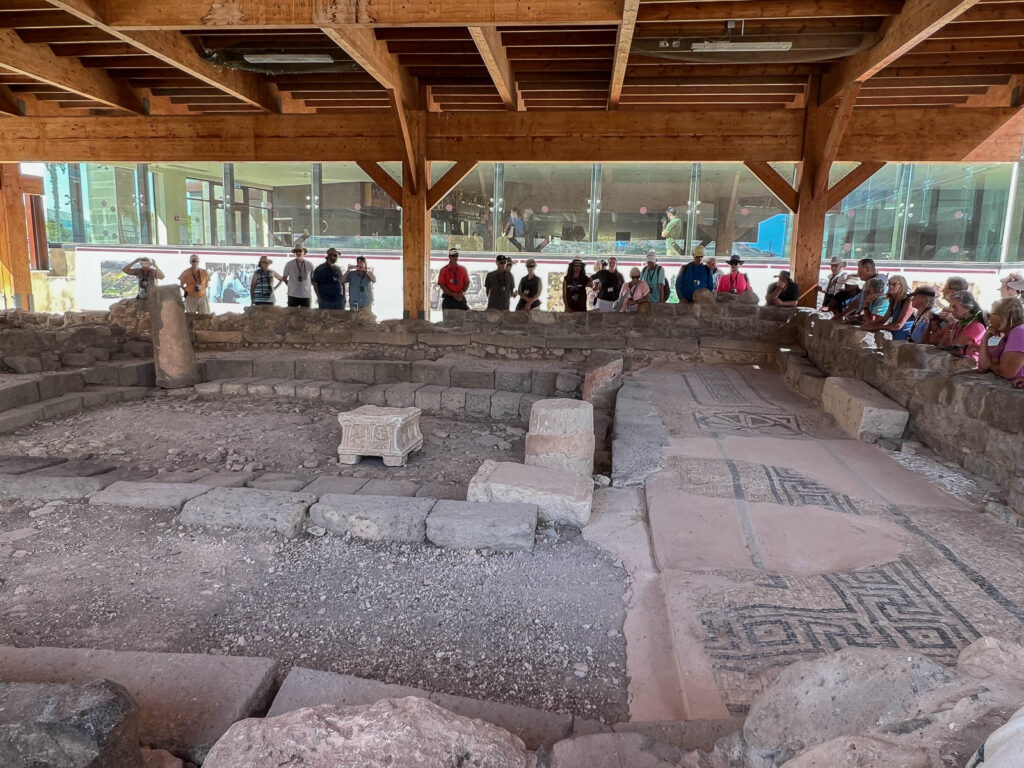Today’s message was given by our tour guide, Abraham, while we visited Tel Dan in the northernmost region of Israel, the Golan Heights. (Take the history I’m about to impart with a large grain of salt. My memory of what Abraham said today differs considerably with what my quick on-line search revealed).
When King Solomon, son of King David, died the united kingdom of Israel was divided into a northern region of Israel, Samaria, and a southern region, Judah, which included Jerusalem. Jeroboam, the king of Samaria, feared that his people would want to travel to Jerusalem to worship, thereby threatening his rule. He built two golden calves and placed one at a temple in Bethel, at the southern border of Samaria and one at Dan, on the northern border as idols they could worship. This violated the first commandment received by Moses. God retaliated and an external tribe (this is where I’m having historical problems) wiped out all the Samarians who had worshiped the golden calf at Dan. This was more severe than the punishment God handed out when the Babylonians took Israel into exile. At least then they were allowed to return. Jeroboam and his people were simply wiped out.
So much for the history lesson. Our guide Abraham’s message was: “What god do you worship? It’s easy to slip into the bad habit of worshiping someone or something other than the true God. Keep your eye on the ball.”
The same message arose at Caesarea Philippi (not to be confused with the Caesarea on the Mediterranean coast that we visited yesterday). Jesus brought his disciples to Caesarea Philippi shortly before his crucifixion. At the time, Caesarea Philippi was the Las Vegas of Israel. There were dozens of temples and Roman gods to worship. Jesus asked Peter, “Who do you say that I am.” Peter could have answered John the Baptist, Elijah or one of the profits. But he, for once, came up with the correct answer: “You are the Messiah, the Son of the living God.” So the message was the same: who do you worship?
Enough sermonizing. But you get the idea how this tour is tying in biblical references – both old and new – to the places we visit. The further back in time you go, the murkier the story becomes. Each site has layers of archeological digs that gives you a feel for how things might have been.
Next stop: Magdala, hometown of Mary Magdala, Jesus’s friend who was present at his crucifixion and resurrection. The town, about three miles north of Tiberius on the Sea of Galilee, was uncovered in 2009. Two temples, dating from between 50 BCE to 100 CE, have been uncovered. The largest is the only intact ruins of a Jewish temple from that period. The temple in Jerusalem was destroyed by the Romans in 70 CE. The Magdala temple was destroyed by the Romans about the same time but the site was abandoned so the ruins are still intact, unlike the temple in Jerusalem. Magdala is said to have been a center for processing of fish from the Sea of Galilee and evidence of structures used for that purpose can be seen.
The Catholic Church’s Notre Dame of Jerusalem Center has established a large and impressive visitors’ center at Magdala with chapels and conference facilities. Construction work began in 2009 which led to the discovery of the Magdala ruins.
Final stop: the Ancient Galilee Boat. Discovered in 1989 by amateur archeologists, the wooden boat remains date from the first century CE. Some call it the “Jesus Boat” and while it dates to the time of Jesus there is no evidence that he ever sailed in it. The State of Israel has built an impressive display of the preserved boat, complete with a 7-minute video and an elaborate gift shop.
Throughout much of the day we were traveling in the Golan Heights, an area sometimes called the thumb or finger of Israel. It is an area captured by Israel from Syria in the 1967 Six-Day War. Israel considers this area to be of great strategic importance as a military buffer zone between itself and Syria and near-by Lebanon and as a point that controls water flows into the Jordan River and the Sea of Galilee. We saw evidence of Israeli and Syrian defense positions. We were about 25 miles from Damascus, Syria.
Tomorrow we visit several churches so knees and shoulders must be covered . Later we’ll sail on the Sea of Galilee, which is not, of course a sea but just a moderate-sized lake about 300 feet below sea level. At the end of the day we’re going to be offered the chance to be baptized in the River Jordan.


